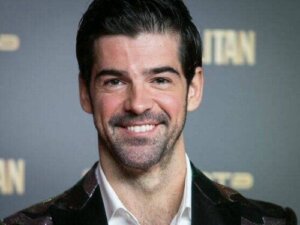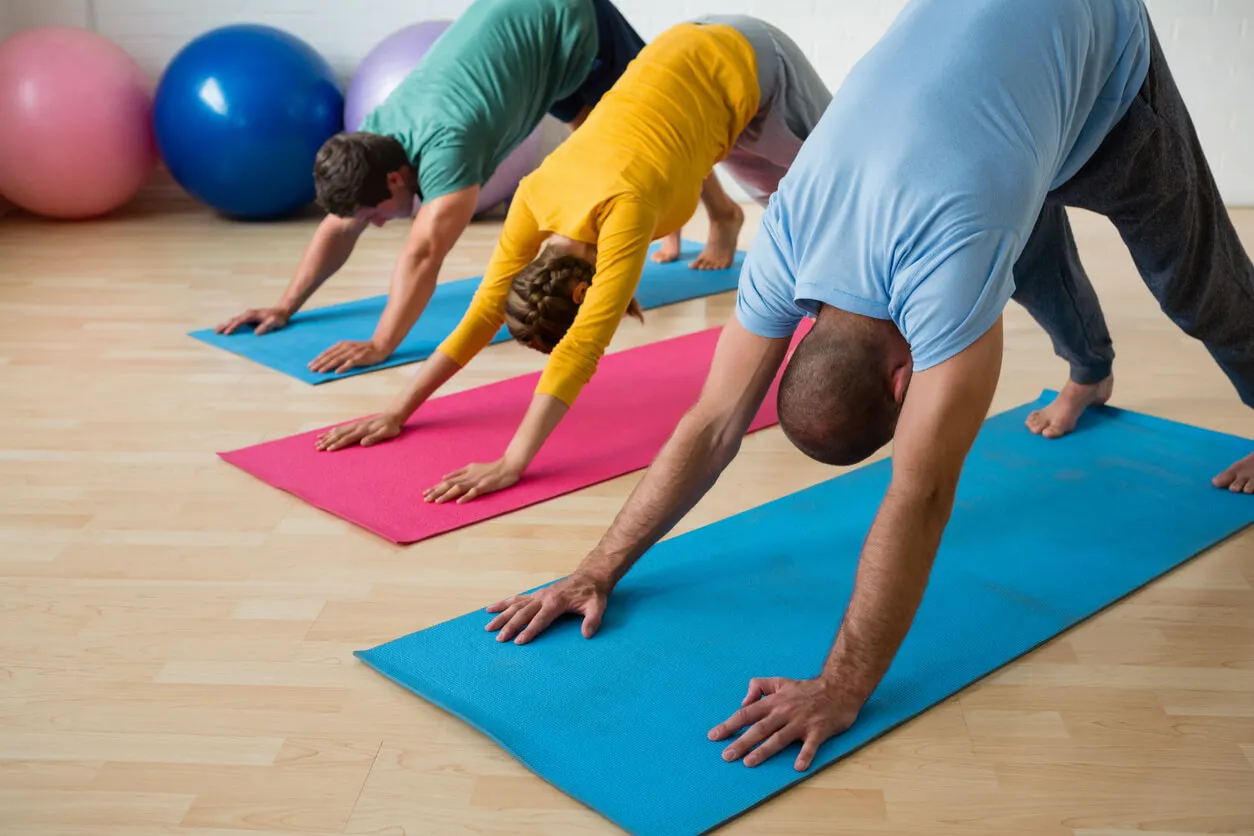The Abdominal Routine of Actor Miguel Ángel Muñoz


Written and verified by the doctor Leonardo Biolatto
If we were to tell you that Miguel Ángel Muñoz’s abs routine isn’t really a routine, it would seem impossible. However, the truth is that the 39-year-old actor doesn’t seem to follow a strict workout routine.
He’s not a fan of the gym, but he does practice CrossFit and runs a lot. But doesn’t make it difficult to develop muscle mass?
However, the pictures of the Madrid-born actor’s abs refute these rumors. Although he’s not one for taking pictures of himself with little clothing and showing them on social networks, some have shown the abdomen he achieved over time.
Yoga in the abdominal routine of Miguel Ángel Muñoz
I discovered yoga because it was recommended to me to alleviate some back and neck problems. -Miguel Ángel Muñoz
On several occasions, the actor has expressed that he worries about his inner self. He wants to understand how his mind reacts to relate to others. In this sense, yoga seems to be the perfect practice.
It’s also logical that he’s resorted to it for back and neck pain. According to scientific studies, some variants of yoga have been shown to relieve bone and muscle pain. By performing the correct postures and avoiding the more complicated ones, patients achieve evident improvements when they suffer from back discomfort.
Muñoz does Bikram yoga when he’s in Spain, but when his commitments take him to the United States, he opts for hot yoga there. What are their differences?
Let’s take a look.
We think you may also enjoy reading this article: This Is the Simple 15-15-15 Routine that Keeps Jennifer Aniston in Shape at 53
Bikram yoga
This variant of yoga owes its name to its creator: Bikram Choudhury. His proposal consists of 26 poses with breathing exercises that are performed in a warm environment, with a room temperature above 40 degrees Celsius.
Each session of Bikram yoga repeats the same postures with the same sequence. This is where it differs from hot yoga, as we will discuss later.
Performing in such a hot environment has its complications, as not all instructors allow intermediate water intake. It’s therefore necessary to be aware of the risk of dehydration.
In any case, it’s logical to assume that there is a significant loss of calories during the session. The achievement of the postures, the maintenance of muscle tone while performing them and the ambient temperature contribute to fat burning.

Hot yoga
Hot yoga could be considered a form of Bikram yoga, although the substantial difference is in the poses. Here, there’s no strict adherence to a routine that is repeated in every session. It’s freer and is based on the dynamics of hatha yoga.
The warm environment, in addition to the temperature of 40 degrees Celsius, should ensure a humidity of 40%. In these conditions, sweating is repeated, and so, too, is the risk of dehydration and increased calorie burning.
Many of its practitioners claim that the heat improves elasticity. Therefore, it may be easier to achieve poses that would otherwise be complicated.
Surfing in the abdominal routine of Miguel Angel Muñoz
The Spanish actor loves surfing. This sport has a high energy load. You need a very firm core to handle the board before the momentum of the sea.
I came to this sport through a Mexican friend. I started in Venice Beach, which is more relaxed and less pro than Malibu. -Miguel Ángel Muñoz
It’s interesting to note that surfing has gained ground as a healthy activity. Before, it was considered only a form of fun for teenagers who lived on the beach.
However, just remember the campaign launched by the Spanish Surfing Federation under the hashtag #surfingesvida (“surfing is life”). Several medical professionals joined in and indicated the sport to their patients to support the treatment of chronic conditions such as high blood pressure, obesity, and even psoriasis.
In surfing, the abdominal muscles are strengthened because the movement of the center of the body is essential for the changes of direction of the board. Once on the board, the holding of muscle tension and isometric exercise becomes constant.
That is to say, this sport can mark abdominals without the need to perform repetitive crunches. Of course, it’s not the same, but the combination of outdoors and toning is more than interesting.

Like this article? You may also like to read: The Weight Watchers Approach: What It Is, the Advantages and Disadvantages
Muñoz’s sporting variety
Miguel Ángel Muñoz doesn’t just practice yoga and surfing. He also plays soccer on a regular basis with the Real Madrid veterans and goes running.
Does this variety explain his abs without a strict routine? It could be possible if we consider that any athletic person can tone his muscles in general with persistence and constancy.
In any case, we must remember the importance of diet. The actor has commented in interviews that he tries to take overall good of his body. This is in line with yoga.
The diet is part of a self-care process that is holistic. Concern for inner and outer health are pillars in the search for wellness.
For years, I’ve been more concerned about what happens inside me than about my appearance. For me, the important thing is to feel good about myself. -Miguel Ángel Muñoz
There’s no abdominal routine by Miguel Ángel Muñoz that we can classify as such. There is, however, a lifestyle and a way of facing everyday life that we can learn from.
Sport, the outdoors, a connection with oneself... It’s about entering into a harmony that doesn’t overwhelm us in the search for a slim body, but that enhances our physical and mental qualities.
All cited sources were thoroughly reviewed by our team to ensure their quality, reliability, currency, and validity. The bibliography of this article was considered reliable and of academic or scientific accuracy.
- Kim, Sang-Dol. “Twelve weeks of yoga for chronic nonspecific lower back pain: a meta-analysis.” Pain Management Nursing 21.6 (2020): 536-542.
- Ross, Alyson, and Sue Thomas. “The health benefits of yoga and exercise: a review of comparison studies.” The journal of alternative and complementary medicine 16.1 (2010): 3-12.
- ElMahdy, Yasmine Mounir. “A case-study of the benefits acquired by surfers in Jæren, Norway.”
- Braun, Tosca D., et al. “Yoga participation associated with changes in dietary patterns and stress: A pilot study in stressed adults with poor diet.” Complementary Therapies in Clinical Practice 45 (2021): 101472.
This text is provided for informational purposes only and does not replace consultation with a professional. If in doubt, consult your specialist.








